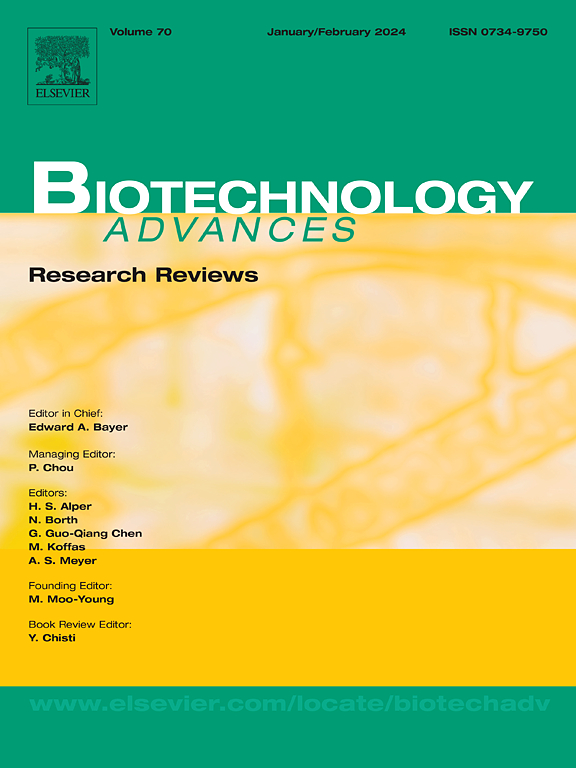Taking the 3Rs to a higher level: replacement and reduction of animal testing in life sciences in space research
IF 12.1
1区 工程技术
Q1 BIOTECHNOLOGY & APPLIED MICROBIOLOGY
引用次数: 0
Abstract
Human settlements on the Moon, crewed missions to Mars and space tourism will become a reality in the next few decades. Human presence in space, especially for extended periods of time, will therefore steeply increase. However, despite more than 60 years of spaceflight, the mechanisms underlying the effects of the space environment on human physiology are still not fully understood. Animals, ranging in complexity from flies to monkeys, have played a pioneering role in understanding the (patho)physiological outcome of critical environmental factors in space, in particular altered gravity and cosmic radiation. The use of animals in biomedical research is increasingly being criticized because of ethical reasons and limited human relevance. Driven by the 3Rs concept, calling for replacement, reduction and refinement of animal experimentation, major efforts have been focused in the past decades on the development of alternative methods that fully bypass animal testing or so-called new approach methodologies. These new approach methodologies range from simple monolayer cultures of individual primary or stem cells all up to bioprinted 3D organoids and microfluidic chips that recapitulate the complex cellular architecture of organs. Other approaches applied in life sciences in space research contribute to the reduction of animal experimentation. These include methods to mimic space conditions on Earth, such as microgravity and radiation simulators, as well as tools to support the processing, analysis or application of testing results obtained in life sciences in space research, including systems biology, live-cell, high-content and real-time analysis, high-throughput analysis, artificial intelligence and digital twins. The present paper provides an in-depth overview of such methods to replace or reduce animal testing in life sciences in space research.
将3r提升到更高的水平:在空间研究中替代和减少生命科学中的动物试验。
人类在月球上定居、载人火星任务和太空旅游将在未来几十年成为现实。因此,人类在太空的存在,特别是长时间的存在,将急剧增加。然而,尽管有超过60 年的航天飞行,空间环境对人体生理影响的潜在机制仍未完全了解。动物,从复杂的苍蝇到猴子,在理解太空中关键环境因素的(病理)生理结果方面发挥了开创性的作用,特别是重力和宇宙辐射的改变。由于伦理原因和有限的人类相关性,在生物医学研究中使用动物越来越受到批评。在3r概念的推动下,呼吁替代、减少和改进动物实验,在过去的几十年里,主要的努力集中在开发完全绕过动物实验或所谓的新方法方法的替代方法上。这些新方法的范围从单个原代细胞或干细胞的简单单层培养到生物打印的3D类器官和重现器官复杂细胞结构的微流控芯片。生命科学在空间研究中应用的其他方法有助于减少动物实验。这些包括模拟地球空间条件的方法,如微重力和辐射模拟器,以及支持在空间研究中处理、分析或应用生命科学中获得的测试结果的工具,包括系统生物学、活细胞、高含量和实时分析、高通量分析、人工智能和数字孪生。本文深入概述了在空间研究中替代或减少生命科学动物实验的方法。
本文章由计算机程序翻译,如有差异,请以英文原文为准。
求助全文
约1分钟内获得全文
求助全文
来源期刊

Biotechnology advances
工程技术-生物工程与应用微生物
CiteScore
25.50
自引率
2.50%
发文量
167
审稿时长
37 days
期刊介绍:
Biotechnology Advances is a comprehensive review journal that covers all aspects of the multidisciplinary field of biotechnology. The journal focuses on biotechnology principles and their applications in various industries, agriculture, medicine, environmental concerns, and regulatory issues. It publishes authoritative articles that highlight current developments and future trends in the field of biotechnology. The journal invites submissions of manuscripts that are relevant and appropriate. It targets a wide audience, including scientists, engineers, students, instructors, researchers, practitioners, managers, governments, and other stakeholders in the field. Additionally, special issues are published based on selected presentations from recent relevant conferences in collaboration with the organizations hosting those conferences.
 求助内容:
求助内容: 应助结果提醒方式:
应助结果提醒方式:


